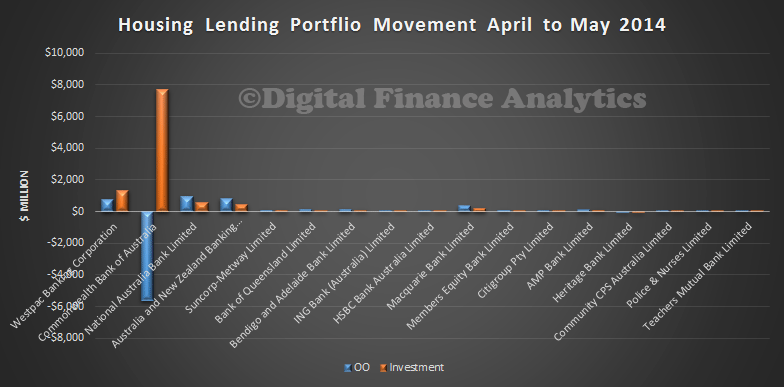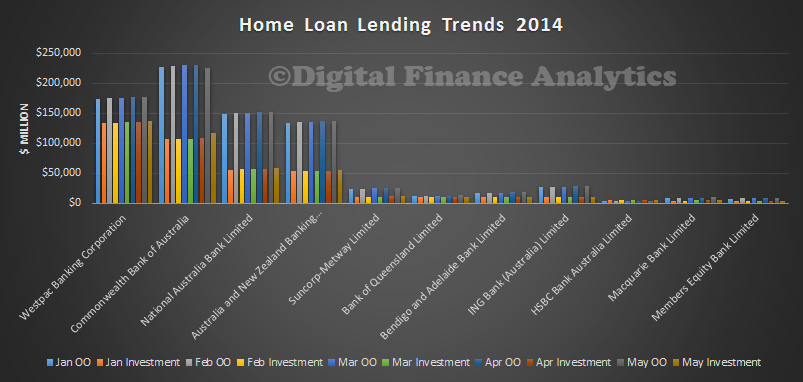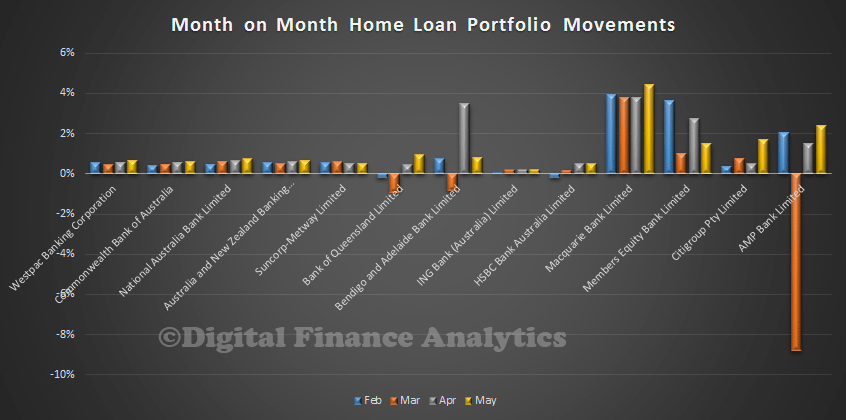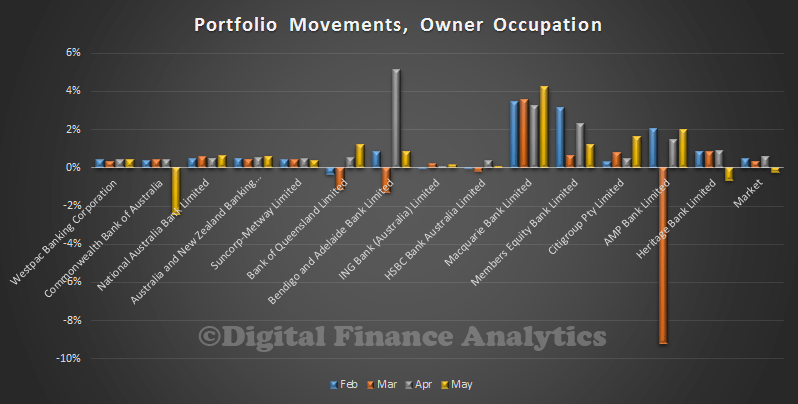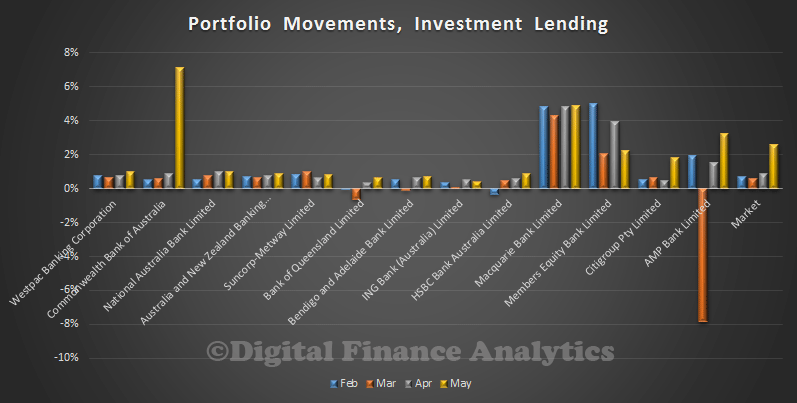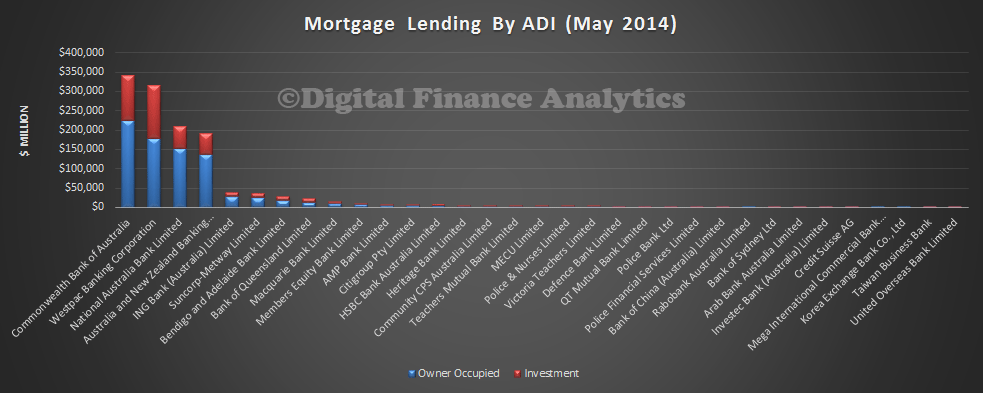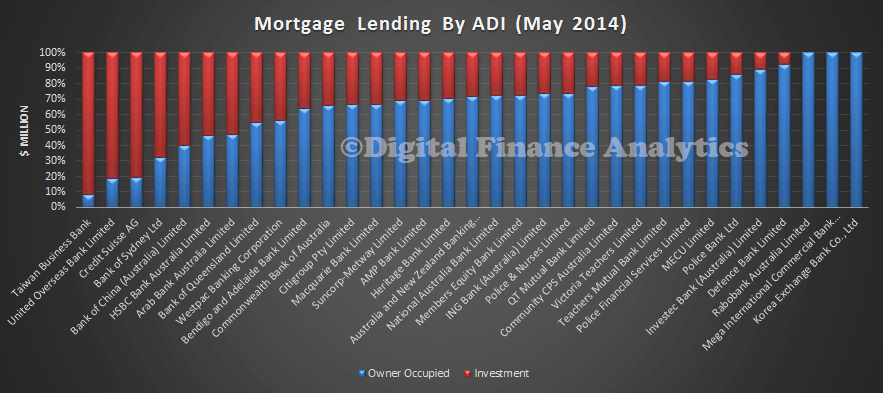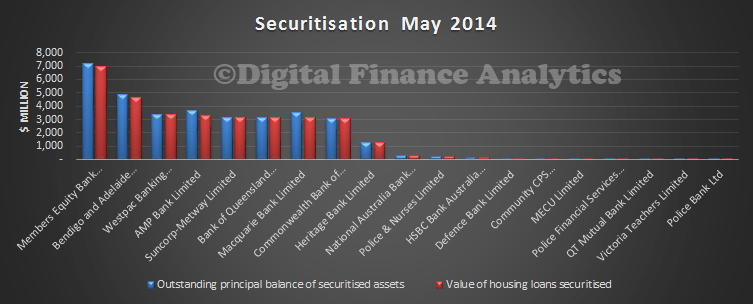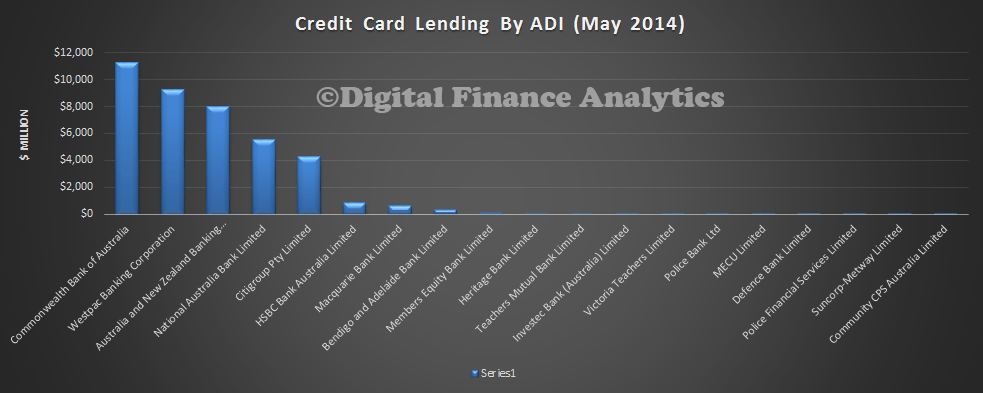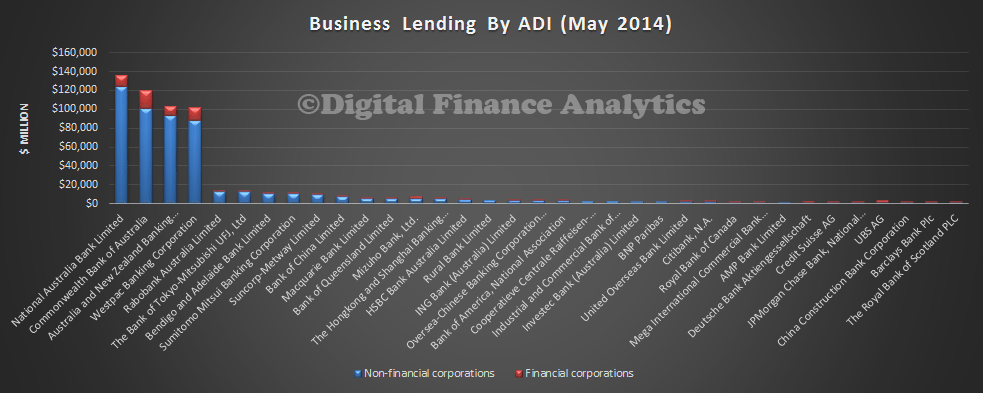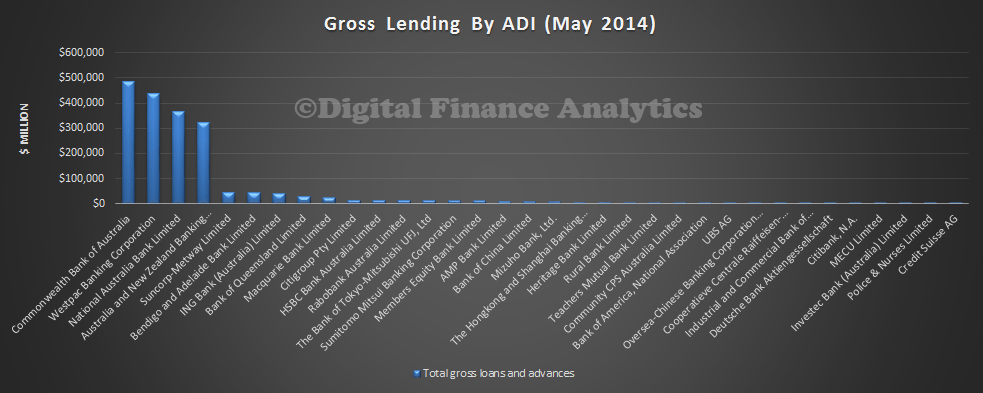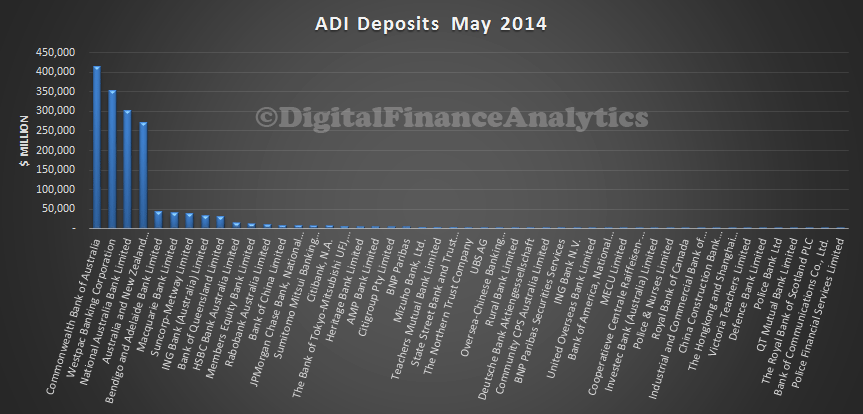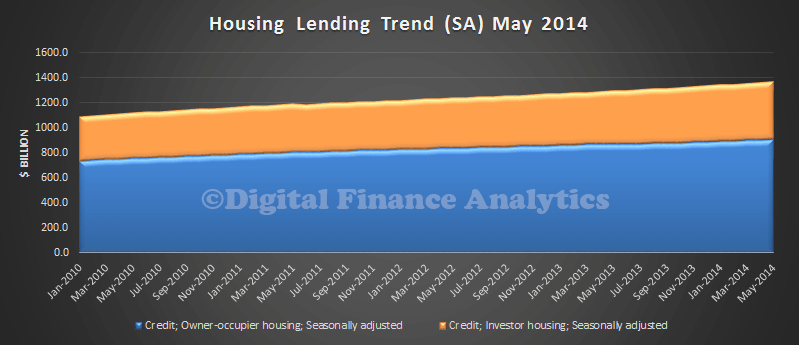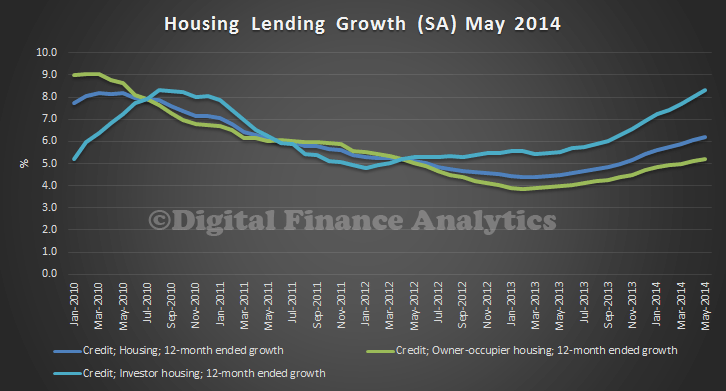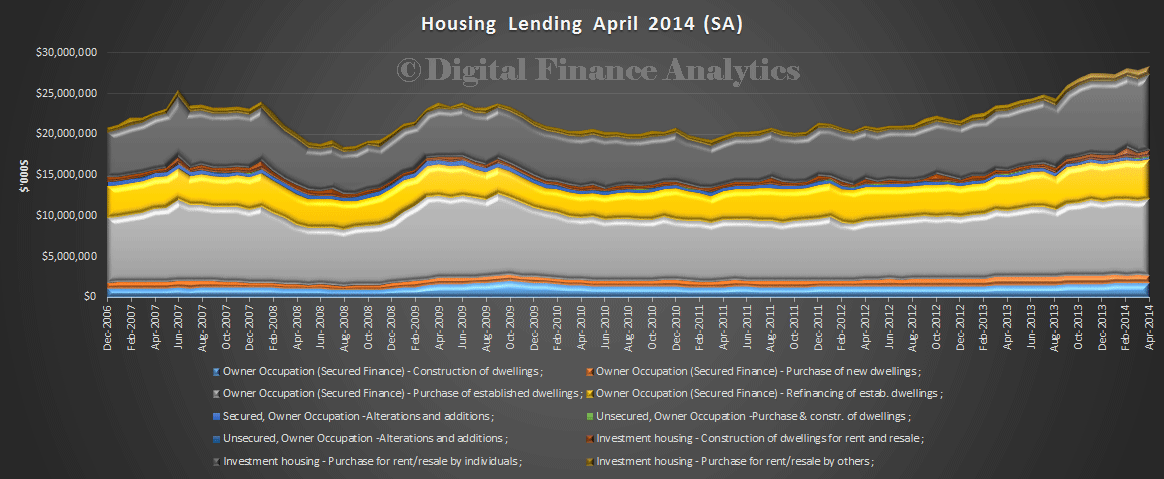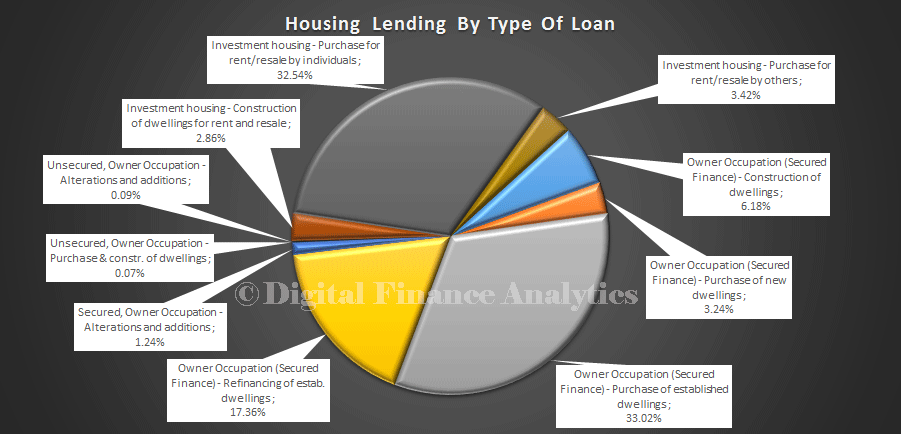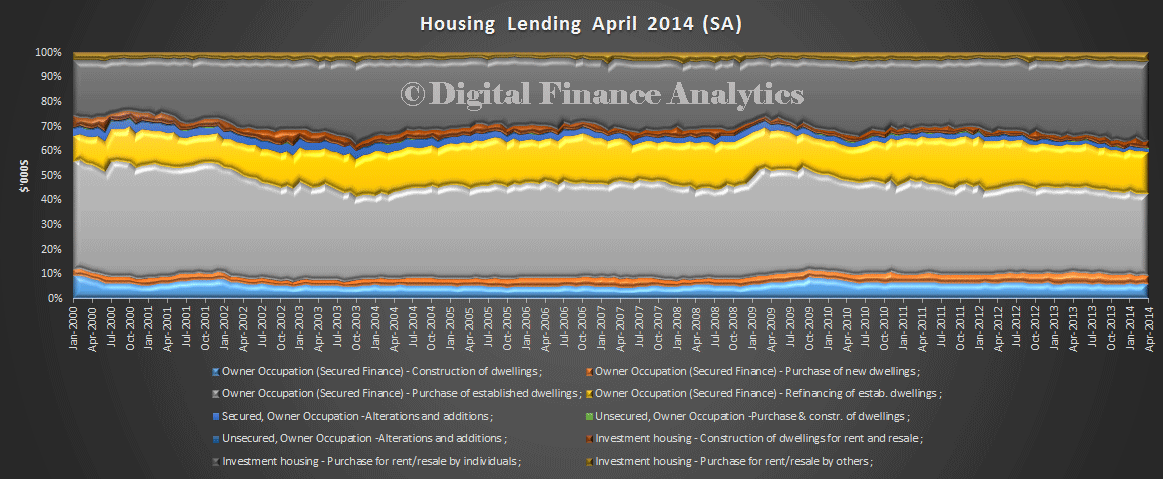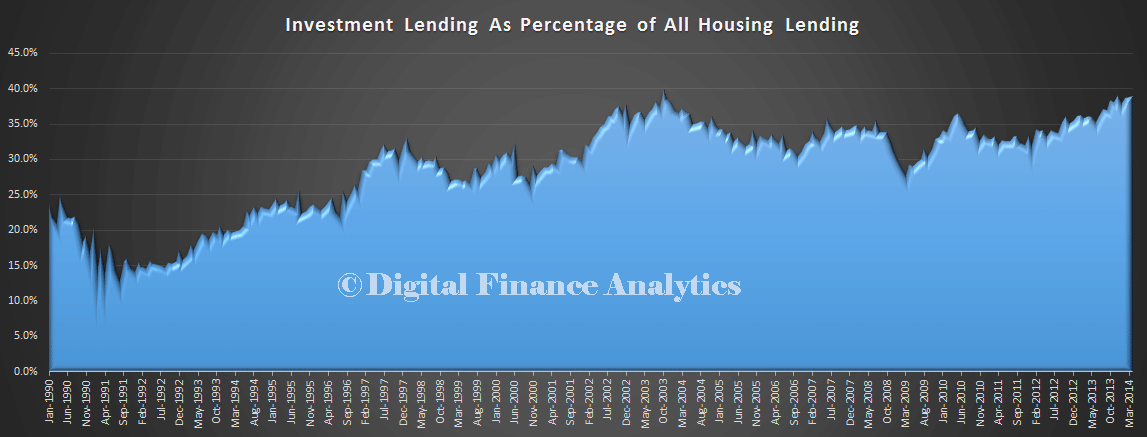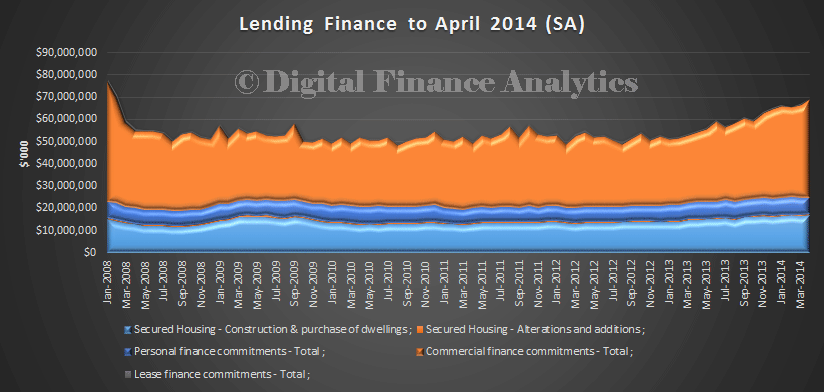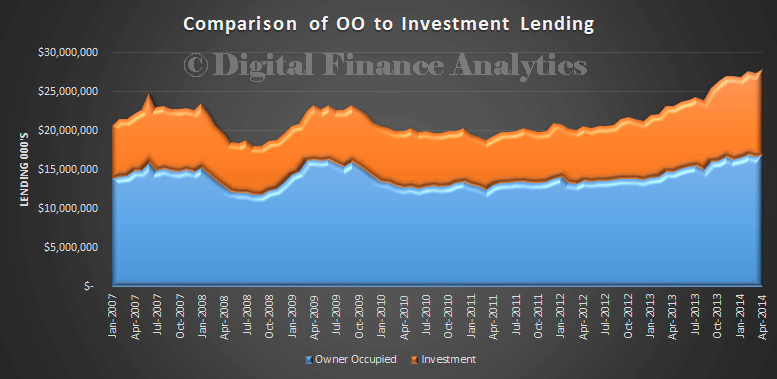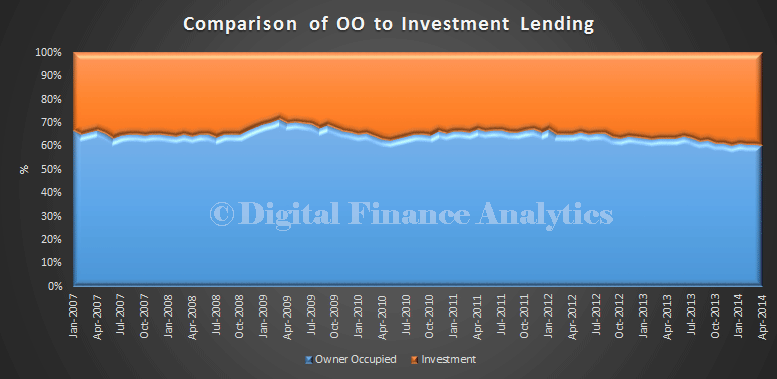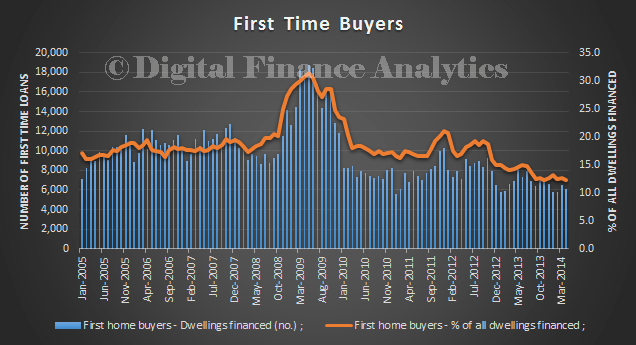Continuing our analysis of the APRA monthly banking statistics, today we execute a deeper dive into the credit card portfolios. The $40.5 billion portfolio is relatively static, fluctuating by about $200m in recent months. As we highlighted, previously, CBA has the biggest share, and Citigroup is the 5th largest player.
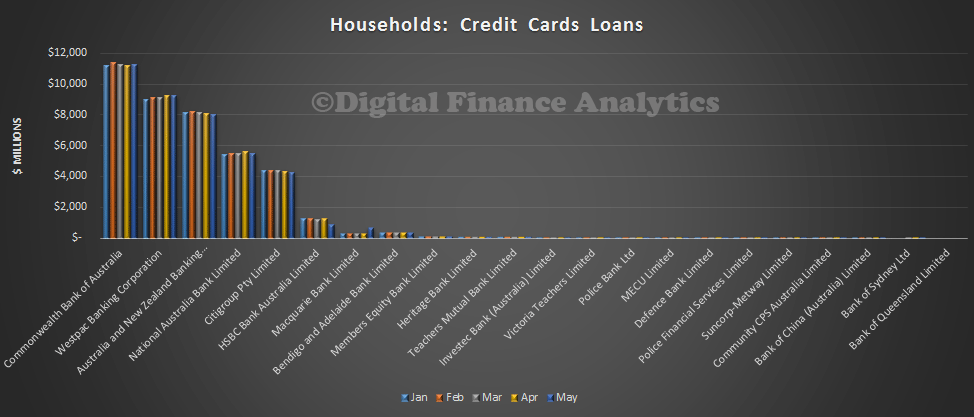 We can show the relative share trends as a percentage of total book. CBA has 28% of the market, and Westpac 23% – together holding more than half the market. Macquarie is a small, but growing player, as we will see in a moment. Citigroup’s share dropped just a little.
We can show the relative share trends as a percentage of total book. CBA has 28% of the market, and Westpac 23% – together holding more than half the market. Macquarie is a small, but growing player, as we will see in a moment. Citigroup’s share dropped just a little.
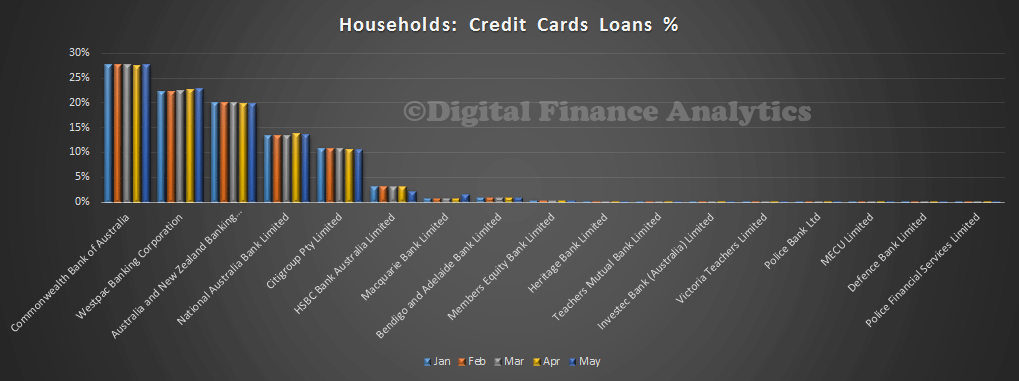 So. lets look at the changes in more detail. Here are the movements by percentage change of individual portfolios. Thanks to Macquarie’s acquisition of HSBC’s Woolworths white label credit card portfolio for $362 million in May, we see a significant swing away from HSBC, to Macquarie, who more than doubled their portfolio in the transaction. HSBC released a statement saying it was still committed to the Australian market, but the Woolworth agreement would terminate, although they would continue to provide card services through to 2015.
So. lets look at the changes in more detail. Here are the movements by percentage change of individual portfolios. Thanks to Macquarie’s acquisition of HSBC’s Woolworths white label credit card portfolio for $362 million in May, we see a significant swing away from HSBC, to Macquarie, who more than doubled their portfolio in the transaction. HSBC released a statement saying it was still committed to the Australian market, but the Woolworth agreement would terminate, although they would continue to provide card services through to 2015.
 Looking at the data another way, in portfolio dollar terms, we see CBA growing a little, whilst nab, ANZ and Citigroup fell in May. The Macquarie transaction also shows up clearly. Overall in May the total across all banks fell just over $200 million.
Looking at the data another way, in portfolio dollar terms, we see CBA growing a little, whilst nab, ANZ and Citigroup fell in May. The Macquarie transaction also shows up clearly. Overall in May the total across all banks fell just over $200 million.
 So, we see household card debit is quite constrained at the moment. We also see Macquarie extending its reach across retail banking, including mortgage lending, and credit cards.
So, we see household card debit is quite constrained at the moment. We also see Macquarie extending its reach across retail banking, including mortgage lending, and credit cards.

